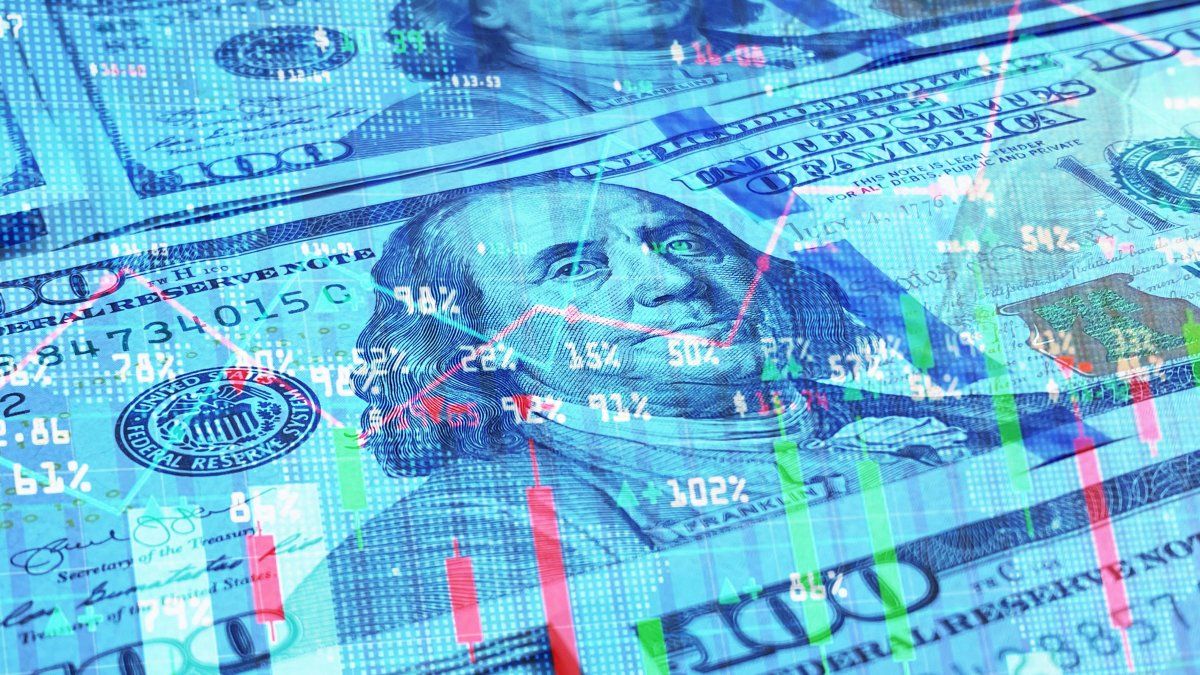The Boom of Artificial Intelligence (AI) continues to generate debate, especially when alarms are lit on Wall Street. A specialized manager turned to the rise of the rail business in the US to better understand the current technological fury.
Investors have spoken a lot about the “buffet indicator”Since the Olaha Oracle began to comment. Warren Buffett compared the stock market capitalization of the US market with GDP. Apparently, use it as long -term indicator of the attractiveness of actions prices. While there are other indicators, such as the data of the Federal Reserve of St. Louis on the Variable Income as a percentage of the financial assets of US households, the data of Buffett They present numerous disturbing aspects. At present, the Buffett indicator is currently in approximately 217% of the US GDPits highest level to date. It is, in short, in another way to analyze the economic history of the previous capital investment cycles to try to understand other phenomena such as the current one that drives stock market enthusiasm with the Development of artificial intelligence (AI). This is seen by the Cole Smead strategist, of the homonym manager, who on the railway boom in the 1880s made a series of calculations that sown concerns about the course that this AI train could take. What does the railway furor of the late nineteenth century say about the current euphoria of AI?
The content you want to access is exclusive to subscribers.
Often, capital spending is considered the fundamental element for the expansion of an industry, and the emergence of the American Railway Network is usually cited as an effort of huge costs Designed to remodel the country’s commercial potential. However, frequently The investment size is overlooked compared to the time it took to generate a significant returnSmead points out. In your latest report “The stock Market’s Berkshire Problem, Smead used the” buffet indicator “, comparing the capitalization of the US stock market with the GDP, as a means to quantify the current stir and enthusiasm around the AI boom. As already mentioned, this indicator, which is currently in the 217%, And it can be compared to previous investment cycles, says Smead, which allows historical comparisons. In that context, he adds, the “forced growth” generated by the railroads did not translate into significant profitability for the huge inverted volumes. The land and loans granted by the federal government, as well as the capital contributed in shares and loans by investors to the railway companies, were large. This promoted growthbut as it was difficult to obtain profitability, many of these railways They broke or were forced to restructure. “The Economic Panists of 1873 and 1893, as well as the recession of 1882-1885, reminded the investors that The railroads were not good investments“, remember.


Today many people talk about the concentration of the current stock market. The concentration of the new revolution of AI drives this enthusiasm. “If we observe the IA hyperscators (the large -scale cloud computer suppliers, such as Amazon Web Services, Microsoft Azure and Google Cloud Platform, Meta, Amazon and Nvidia), they currently represent the 25% of the stock market. During the 1880s, the railroads represented approximately 60% of the stock market. So, based on this comparison tool, Smead states that IA represents 50% of the value of the current economy, compared to just 30% of the railroads in its peak period of the 1880s.
Hence, it indicates that, if the levels of “enthusiasm” received around the sectors, measured by the concentration of industries, in front of the Buffet indicator And then it is divided by the Capital/GDP Expenditure Relations, then, alarms sound on AI.
“The enthusiasm index is a form of Interpret how current capital spending is valued in the economy In the stock market. The greater the index, the greater the enthusiasm. The lower the index, the less enthusiasm, ”explains the Smead Capital manager. According to their calculations, the railroads had an enthusiasm index of five times in the 1880 characteristic
Today, according to Smead, the index of enthusiasm for investment in the US stock market generated by The AI is 20 times higher than that generated in the 1880s; It is four times greater than the enthusiasm generated by the railroads in the 1880s. It is possible to imagine that many investors outside the US are also excited about this today.
Smead says the Great capitalization technological hyperscaders have now exhausted all investment opportunities based on light assets that were available to them, such as means, advertising, accommodation, retail sale and software. And now they are forced to seek new investment opportunities in an intensive investment in capital called AI to obtain profitability, as Berkshire did with the Midamerican energy company and the BNSF railway company. The railroads were bad investments for a long time. “The difference is that Buffett and Muger did not finance the railroads when there was the greatest financial enthusiasmas in the 1880s. The rate of enthusiasm of the investment is enormous in this frenzy of capital spending in AI ”.
SMEAD explains: If companies that require large capital investments did not help the largest investor of all time, why were they going to help any other investor or the stock market? If you do not help the stock market, we believe that profitability will be lower compared to the past. This is Berkshire’s problem. This is important for investors, since increasing capital investment is never positive.
Charlie, at the 2007 Wesco meeting, said: Railways have long been a lousy business and have been lousy for investors. Finally we change my mind and invest. We discard our paradigms. Buffett and Munger did this to find investment opportunities that would fit their activity. It is no different for these technological companies. The difference is that Buffett and Muger did not finance the railroads when they were in their greatest moment of financial enthusiasmas in the 1880s. The index of enthusiasm for investment It is enormous in this frenzy of capital spending in ia.
In this regard, at this year’s meeting, Buffett was asked about capital spending in AI and his response was: Well, it is always better to earn a lot of money without investing anything than earning a lot of money by investing a lot of money. A business that does not require capital, so to speak, as Coca-colawhose final product has gone through bottling companies, requires a lot of capital, but in terms of the sale of syrup or concentrate, it does not require much. We have businesses that require very little capital and obtain a very high profitability. Damage insurance is a uncommon businesssince capital is needed as a guarantee that promises will be fulfilled, but it can be used to buy other businesses with low capital investment. It will be interesting to see how much capital investment there is now with the “Magnificent 7” compared to a few years ago. Basically, Apple has not needed capital over the years and has repurchased shares with a drastic reduction. If that panorama will remain the same in the future it is something that is still to be seen.
Source: Ambito




